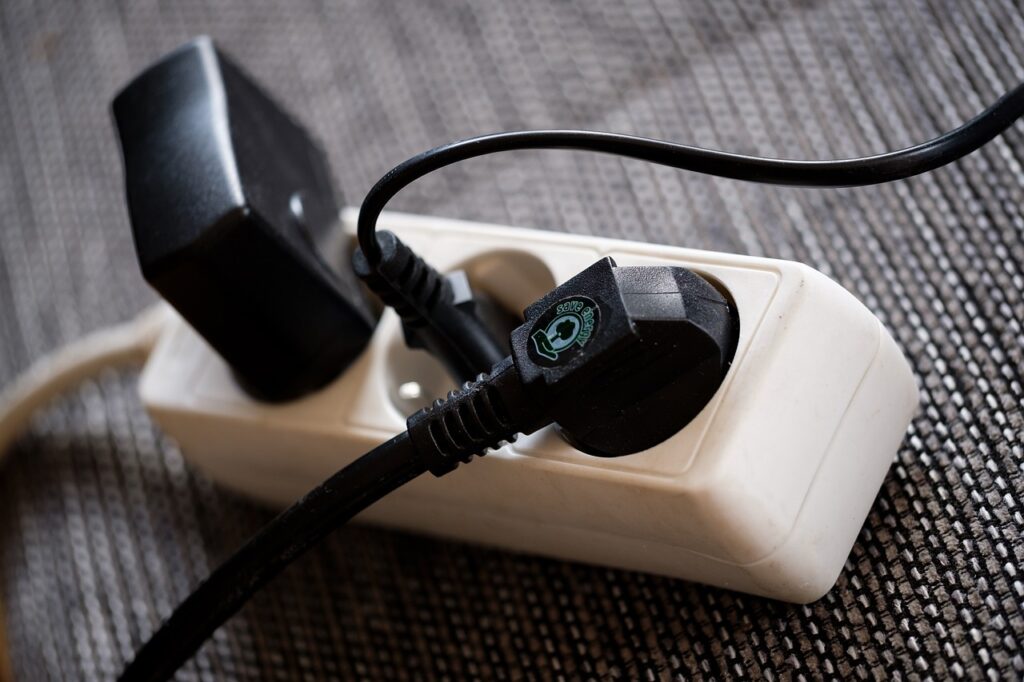In today’s tech-savvy world, most homes are filled with electronic devices that need power and protection. This is where surge protectors and power strips come into play. While these two devices may look similar, they serve different purposes. Knowing the differences between them and when to use each is essential for safeguarding your devices and maintaining convenience in your home.
What Is a Power Strip?
A power strip is a simple, multi-outlet device that expands the number of electrical sockets available from a single wall outlet. It allows you to plug in multiple devices simultaneously, making it ideal for areas like home offices or entertainment centers where you have many gadgets in one spot.
However, it’s important to note that a power strip offers no protection against power surges or electrical spikes. Its primary purpose is to increase the number of outlets, not to shield your devices from potential electrical damage.
What Is a Surge Protector?
A surge protector, on the other hand, does much more than just provide extra outlets. It is specifically designed to protect your electronic devices from power surges. Power surges, also known as voltage spikes, occur when there is a sudden increase in electrical voltage. These surges can result from lightning strikes, power outages, or even large appliances cycling on and off.
Surge protectors work by diverting excess voltage away from your devices and into the grounding wire, keeping your electronics safe. They often come with a joule rating, which indicates how much energy they can absorb before failing. The higher the joule rating, the better the protection.
Key Differences Between Power Strips and Surge Protectors
Functionality: A power strip simply adds more outlets, while a surge protector safeguards against voltage spikes.
Protection: Power strips offer no protection against power surges, whereas surge protectors are specifically designed for this purpose.
Cost: Surge protectors are generally more expensive than power strips due to their protective capabilities.
Indicator Light: Most surge protectors have an indicator light to show that they are functioning properly, whereas power strips typically do not.
When to Use a Power Strip
Power strips are best used in situations where you need additional outlets for low-priority devices that are not sensitive to electrical damage. Examples include:
Plugging in lamps or fans.
Charging devices like phones and tablets (if they are not in constant use).
Running small kitchen appliances like toasters or blenders.
When to Use a Surge Protector
Surge protectors are essential for safeguarding expensive or sensitive electronics. You should use a surge protector in the following scenarios:
Protecting home office equipment such as computers, printers, and modems.
Shielding entertainment systems, including televisions, gaming consoles, and sound systems.
Safeguarding smart home devices like security cameras, hubs, and smart speakers.
Connecting high-end kitchen appliances or medical devices that are sensitive to power fluctuations.
How to Choose the Right Surge Protector
When selecting a surge protector, consider the following:
Joule Rating: Look for a surge protector with at least 600 joules for basic protection. Higher ratings are recommended for more valuable or sensitive devices.
Number of Outlets: Choose a surge protector with enough outlets to accommodate your needs.
Response Time: Faster response times ensure better protection during a surge.
Warranty: Some surge protectors come with connected equipment warranties that cover damage to your devices if the protector fails.
Final Thoughts
While power strips and surge protectors might look alike, their roles in your home are distinct. Power strips are convenient for adding outlets, but they do not protect your electronics from power surges. Surge protectors, on the other hand, provide critical defense against electrical spikes, ensuring the safety and longevity of your devices.
By understanding the differences and knowing when to use each, you can make smarter decisions to keep your home’s electronics safe and your power needs organized. Whether you’re setting up a home office, entertainment center, or smart home system, investing in the right device can save you from costly repairs and replacements in the future.

